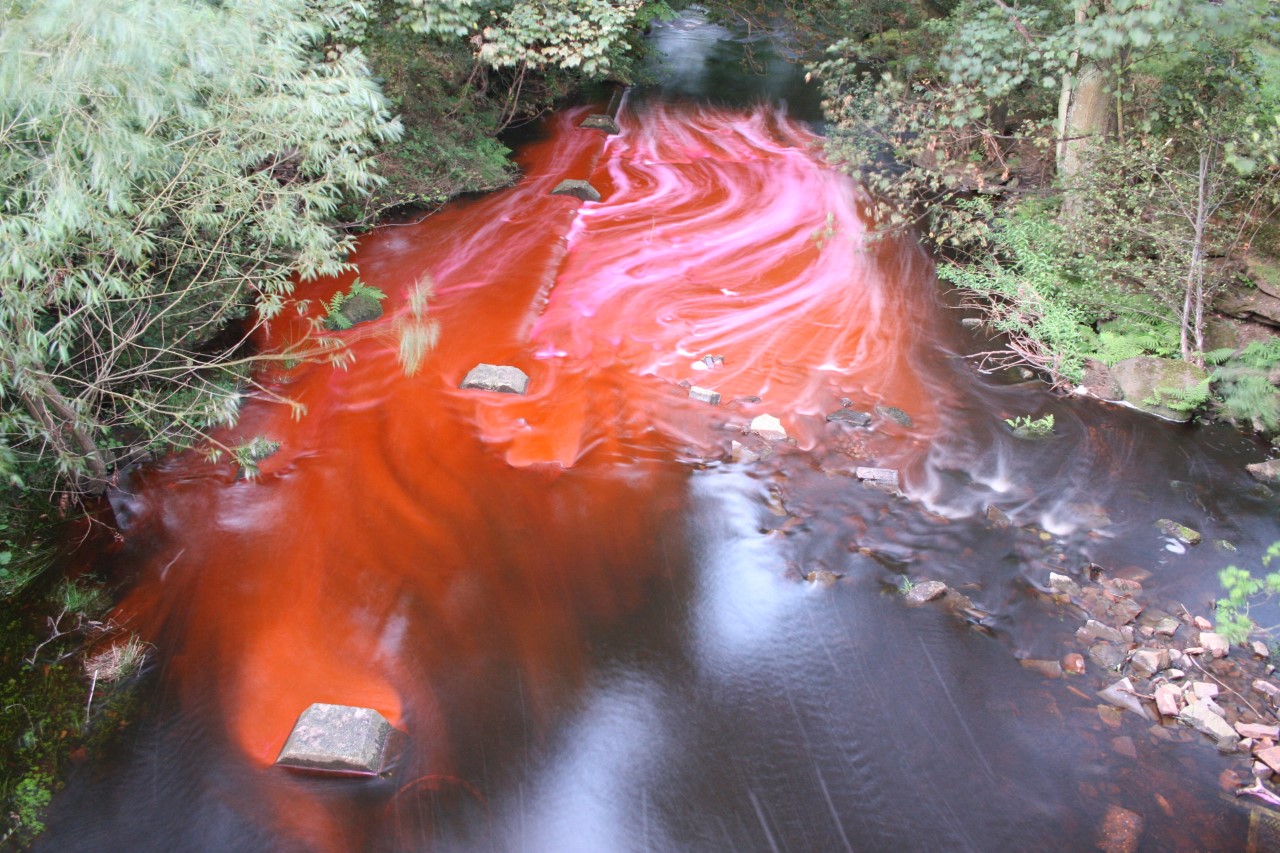Mixing Processes in Pipes, Sewers and the natural Environment from Theory to Practice
IAHR-United Kingdom Chapter
Mixing Processes in Pipes, Sewers and the natural Environment from Theory to Practice
18-19 April 2023 | University of Sheffield, United Kingdom
Report, recordings and presentations Brochure
 The management of water quality in rivers, urban drainage and water supply networks is essential for ecological and human well-being. Predicting the effects of management strategies requires knowledge of the hydrodynamic processes covering spatial scales of a few millimetres (turbulence) to several hundred kilometres (catchments), with a similarly large range of timescales from milliseconds to weeks.
The management of water quality in rivers, urban drainage and water supply networks is essential for ecological and human well-being. Predicting the effects of management strategies requires knowledge of the hydrodynamic processes covering spatial scales of a few millimetres (turbulence) to several hundred kilometres (catchments), with a similarly large range of timescales from milliseconds to weeks.
Predicting underlying water quality processes and their human and ecological impact is complicated, as they are dependent on contaminant concentration. Current water quality modelling methods range from complex three-dimensional computational fluid dynamics (3D CFD) models, for short time and small spatial scales, to one-dimensional (1D) time dependent models, critical for economic, fast, easy-to-use applications within highly complex situations in river catchments, water supply and urban drainage systems.
Mixing effects in channels and pipes of uniform geometry can be represented with some confidence in highly turbulent, steady flows. However, in many water networks, the standard 1D model predictions fall short because of knowledge gaps due to low turbulence, 3D shapes and unsteady flows. This 2-day event will present recent findings from around the world, from laboratory and full-scale field measurements and numerical models, covering aspects from fundamental research to end-user applications.
This free-to-attend meeting provides a unique opportunity for research students, academics, researchers, environmental regulators, engineering consultants and water utilities to hear the latest international research on mixing processes, in an excellent networking opportunity.
*Registration is free but essential for catering purposes.
Venue
The University of Sheffield
Pam Liversidge Building
Lecture Theatre 1 (LT01) (Entrance on the corner of Broad Lane & Newcastle Street)
Sheffield, S1. United Kingdom
Programme (from 9:30 to 16:30 each day)
18 April 2023 | Pipe flow and Urban Drainage
Longitudinal Dispersion in Pipes for Steady and Unsteady Flows
Dr James Hart, Coventry University, UK
Quantifying Cross-sectional concentrations in Accelerating Flows
Dr Zhangjie Peng, University of Sheffield, UK
Advection-Diffusion Solver Suitable for Fluid Circulation in Drilling
Dr Johnny Petersen, formerly IRIS, Norway
Modelling Longitudinal Dispersion in Premise Plumbing – is it needed?
Prof. Steve Buchberger, University of Cincinnati, USA
EPA’s Research into Premise Plumbing Systems, Dispersion, and Applications
Dr Jonathan Burkhardt, Dr Feng Shang, US Environmental Protection Agency, USA
A Novel EPANET Integration for the Diffusive–Dispersive Transport of Contaminants
Dr Stefania Piazza, University of Kore, Italy
Applications to managing distribution networks
Dr Mirjam Blokker, KWR Water, Netherlands
Manhole mixing and modelling
Dr Fred Sonnenwald, University of Sheffield, UK
Sewer modelling for Wastewater-based Epidemiology
Joe Shuttleworth, Arup, UK
Travel times for in-sewer treatment
Dr Ole Mark, Kruger, Denmark
Non-invasive measuring system for the dynamics of FOG deposits
Prof. Francois Clemens, TUDelft, Netherlands
19 April 2023 | Environmental flows
Quantifying the Spatial Variation in On-/Off-shore Mixing in the Surf Zone
Ms Inez Plugge Porter, Imperial College, UK
The spatial routing procedure for estimation of dispersion coefficient
Dr Inhwan Park, Seoul National University of Science and Technology, South Korea
Influence of Vegetation on Pond Residence Times
Prof. Ian Guymer, University of Sheffield, UK
CFD Study of Mixing within Random Cylinder Arrays
Prof. Virginia Stovin, University of Sheffield, UK
Characterization of Hydrodynamics and Mixing Processes in Obstructed Flows
Dr Leo Corredor Garcia, University of Sheffield, UK
Transverse Dispersion in a Compound Channel
Dr Kevin Spence, Sheffield Hallam University, UK
In-situ assessment of hydraulic roughness in a vegetated channel
Prof. Jean Lacoursière, EA-International Ltd, Sweden
Longitudinal dispersion affected by willow patches
Dr Kaisa Västilä, Aalto University, Finland
Influence of vegetation coverage on mixing in the reach scale
Dr Monika Kalinowska, Polish Academy of Sciences, Poland
Integrated monitoring of water quality and water quantity
Dr Jungsun Oh, Korea Institute of Civil Engineering & Building Technology, South Korea
Point Source Contaminant Exposure and Impacts
Prof. Mick Whelan, University of Leicester, UK
Related
